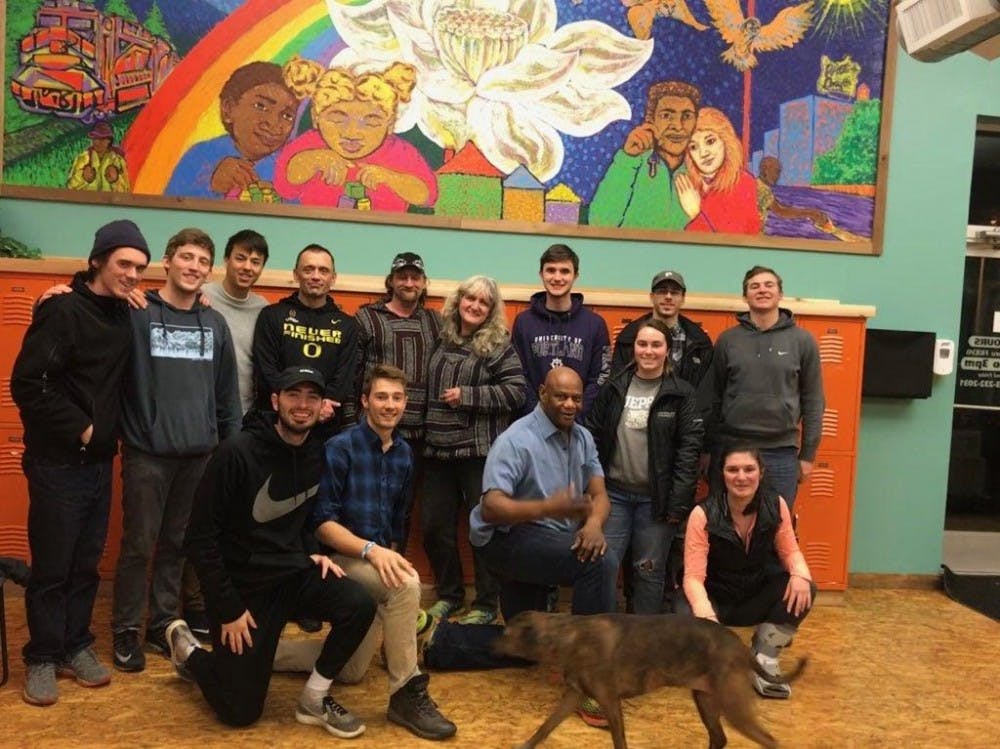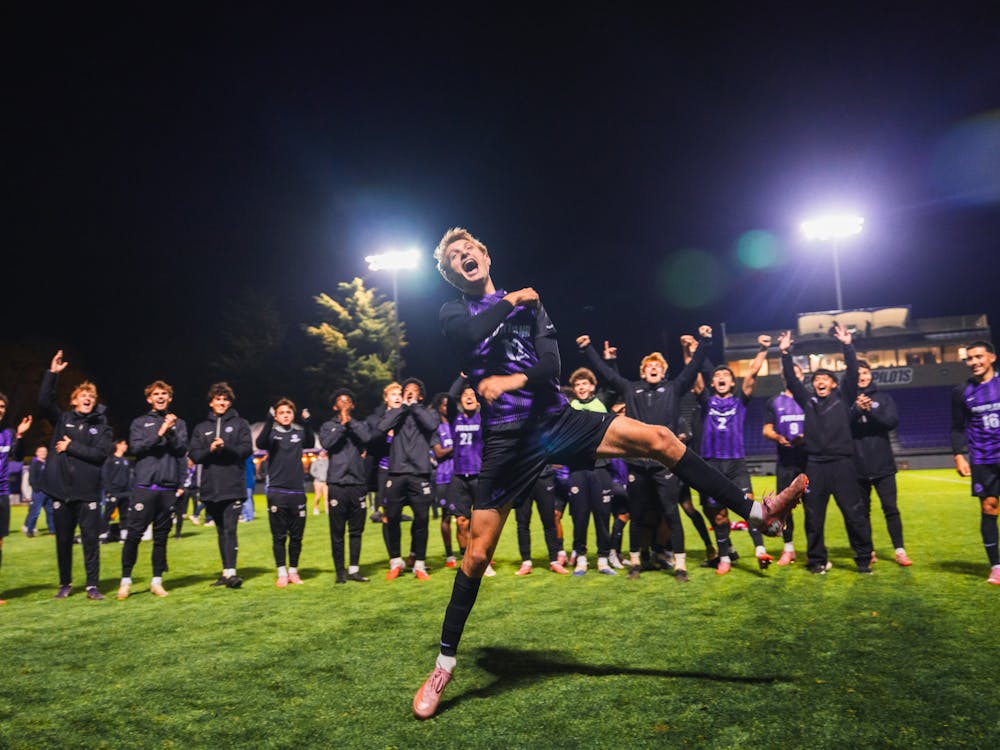As Portland residents walk, drive and bike around the city, one thing is apparent: Portland’s homeless crisis is becoming more severe. Although state and local leaders have drafted plans to solve the problem, homelessness is an ongoing challenge.
On The Bluff, students like ASUP President Brandon Rivera and junior mechanical engineering major Jack Padon say they are trying to make a difference. They launched a 60-day service project seeking to understand the reality of the homeless crisis, then helping through service-learning and the use of innovative skills and ideas. Student groups created an app for resources, a website to share stories of the homeless community, and a hygiene trailer as a part of this project.
They decided to call the project University FOR Portland, because they say that students can often be so consumed by the campus life that they forget about what’s going on beyond UP’s campus.
“Oftentimes, on campus, it becomes a bubble,” Padon explained. “Throughout the semesters, I find myself being consumed by the campus and not the greater community, which we’re a part of. This really just gives the mindset that we’re here to share the resources that we have on campus.”
The co-founders announced the project in an opinion piece at The Beacon in December, but the idea emerged last June. After months of organizing and talking to people, they sent out applications, had a kickoff meeting and publicized the project in different platforms. And with the help of the Moreau Center and other organizations, the service-learning project began in late January.
Eleven students from different disciplines applied and were placed into three teams. And on Thursday, a crowd of over 100 students, faculty and staff, community members and a panel of corporate and non-profit leaders filled the Quiet Side of Bauccio Commons, where each student group presented their ideas and strategies.
The panel members include Kaia Sand, executive director for Street Roots; Kelly Lyons, development director at the Blanchet House; Brian Forrester, head of business development for NurseGrid; Sara Mesing, an independent design strategist, and Scott Larson, a board member at Dignity Village.
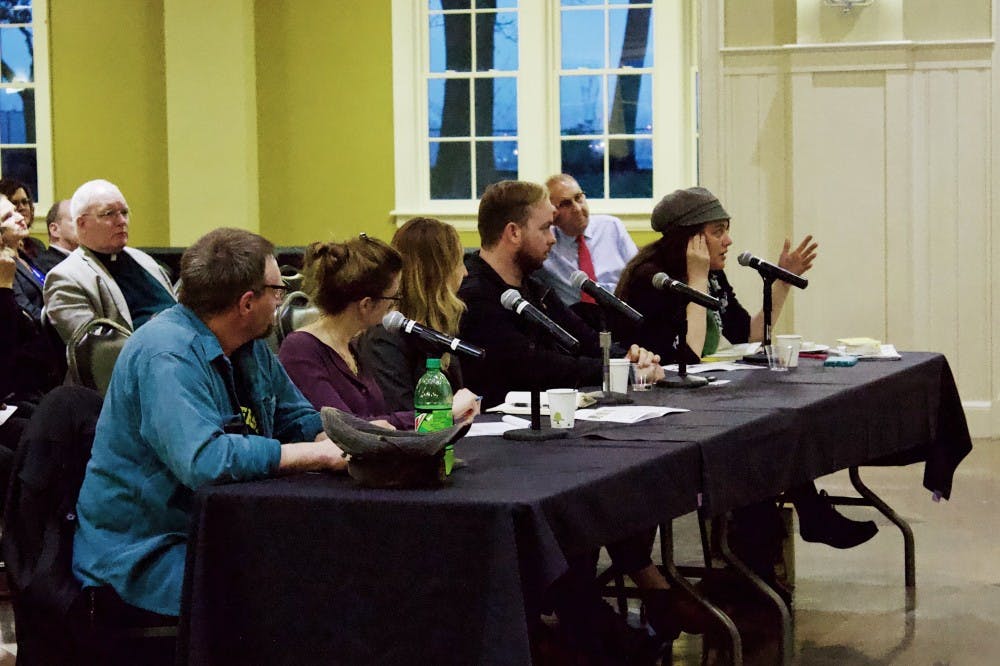
Generating ideas: A three-step process
University FOR Portland consists of three phases. The first three weeks were a part of phase one, which was centralized around understanding different perspectives. Student participants talked to people on the streets, listened to their stories and immersed themselves into the lives of homeless people.
The teams collaborated with and spoke to several organizations such as the Blanchet House, Portland Rescue Mission, Dignity Village and more. They also partnered with JOIN where they had a day-long immersion centering around what it could be like to be homeless.
“There’s not a fix to houselessness,” Padon said. “The most productive way is to first understand the realities of houselessness, and see it through the lenses of the community.”
“Houselessness” is a term that Padon, Rivera and other student participants use because they say that “home” is a much bigger concept that can mean anything. One may have lost their house but one can still find a home some place else.
Phase two of the project involves student participants brainstorming ideas. The three teams came up with a variety of innovative ideas such as launching an accessible mobile app or website to highlight their stories. Once their ideas were narrowed down and solidified, they created a prototype or model that showcased their ideas and vision.
Peter Rachor, UP’s director for entrepreneurship and innovation, guided the students in making their ideas happen. Students used the ThinkTank lab located in the first floor of Franz Hall to develop and generate their ideas.
The final step is called the “validate and learn” phase, where student participants went back to the streets of Hawthorne, Burnside, Old Town and more to talk to people and non-profit organizations to get feedback and constructive criticisms on their ideas.
Team 1: Street Cloud
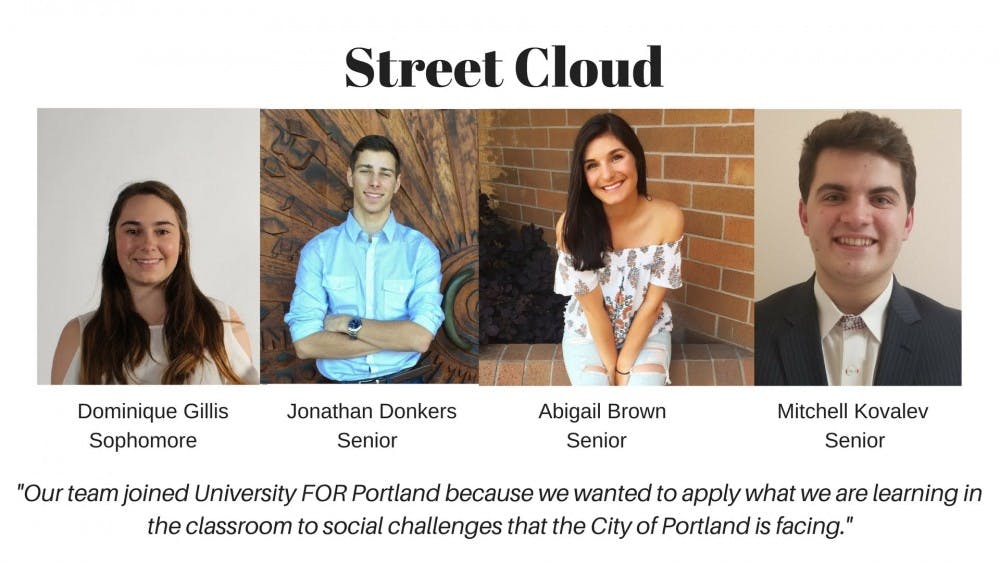
When talking to houseless people on the streets, the team members realized one thing: many of the houseless folks had smartphones. Although these houseless individuals cannot afford data, they are able to connect to free wireless connections all over the city. The team members then proposed a mobile application idea, where the houseless can easily find the information and resources they need.
The app includes places to sleep and eat as well as a map that can navigate them to those locations. The team members also discussed their needs for the project as well as long-term goals where the app can easily be accessible and strategically placed in outdoor locations.
Forrester, one of the panelists, suggested that Street Cloud designers should think about ways and opportunities where they can employ a team of houseless folks to update the locations, since they know more than any of the “housed” individuals.
Team 2: People FOR Portland

The next team, People FOR Portland (P4P), used the concept of human dignity as an inspiration and guiding principle for the project. They say that restoring human dignity gives the houseless community more opportunities and a voice. When people walk down the streets of Portland and pass by people sitting and laying on the streets, more often than not, these houseless individuals are ignored. The team then came up with a website where people can hear the voices and read stories of the houseless community.
“As college students at University of Portland, most of us come from upper and middle-class families,” said one of the team members, Nick Krautscheid. “We plan to use the resources that we have and our privilege to uplift the voices of houseless individuals.”
Team 3: Clean Mobile
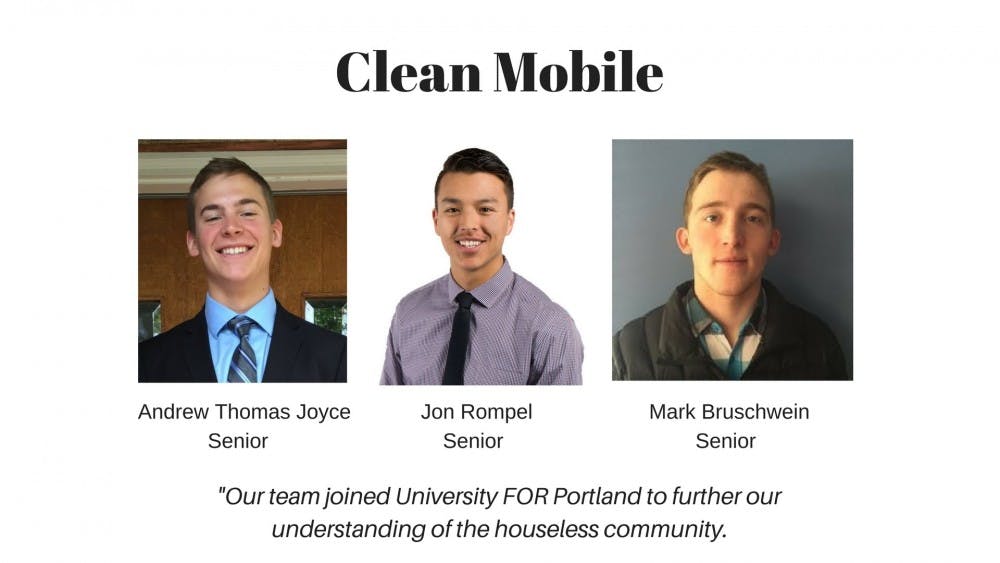
The final team focused on physical hygiene. Members said in their presentation that without proper hygiene, houseless individuals are challenged to acquire jobs and remain healthy, so they lose self-confidence and human dignity. The team members then proposed the idea of a personalized trailer with showers and laundry machines.
The team members have been working with the City of Portland to figure out funding, power and water source for the trailer. However, since all members are seniors who will soon be leaving UP, they need individuals who are willing to carry on their vision and idea.
Panel members were impressed with each group’s ideas. They provided questions, feedback and further ideas to improve their projects. The event ended with closing remarks from Lisa Larson, former chair and current board member at Dignity Village. Larson talked about her experience with domestic violence which led to houselessness at one point in her life.
“Seeing the University FOR Portland (student participants) being so enthusiastic about the issue gives me hope,” Larson said.
The “Bluff Bubble”
“When we get on to The Bluff, it almost seems like we’re in our own world,” Rivera said. “We see the city, we see all these beautiful buildings, but it doesn’t feel like we’re a part of the city sometimes and so this project looks to (break) that bubble and make a difference. We want our students and the University to stand up for our city and represent the people in our city.”
Rivera was inspired by a specific model from a book entitled “Sprint: How to solve big problems and test new ideas in five days” by author Jake Knapp, who created the Google ventures sprint process. Although the project was done longer than five days, Rivera structured the service-learning process in a similar way.
Understanding the issue of “houselessness” is not something anyone can fathom in just one day. Student participants did not gain any incentive for their work. They said that they were initially curious about the issue which eventually led to compassion and wanting to make a change.
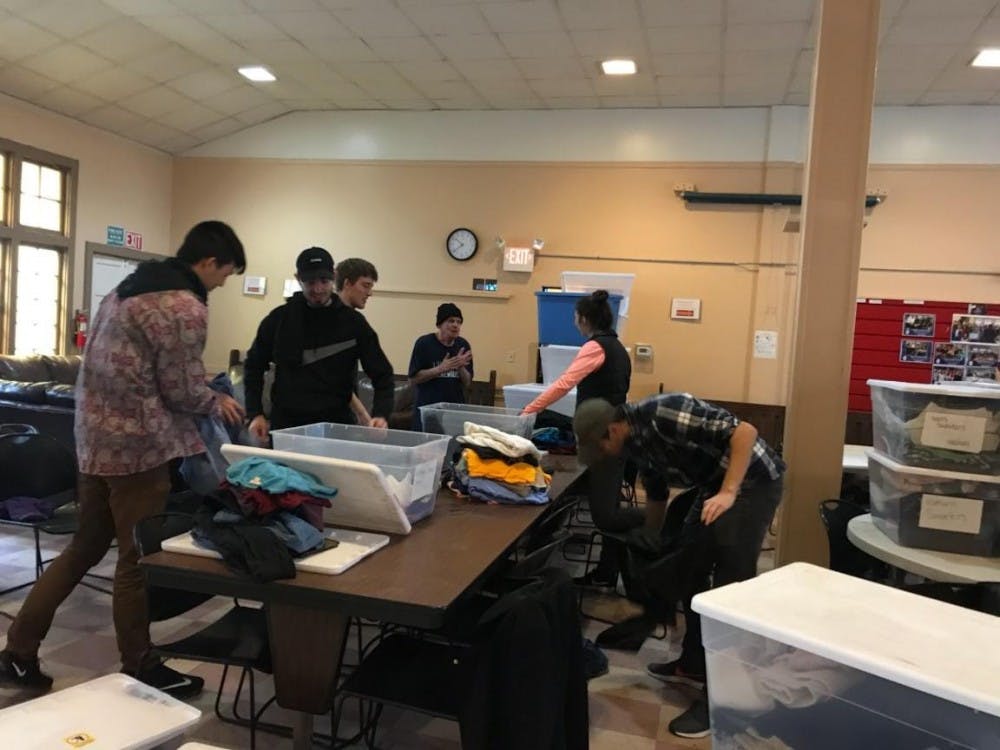
As student participants progressed in different stages of the project, they found themselves going back to the “understanding” portion of the process, which Padon said was the most intensive and crucial part of the project.
“I’m very touched by the energy and determination of the groups,” said Vice President for Student Affairs Fr. John Donato, who was present the night of the presentation. “(The students’) vision gives me great hope that what we do here (at the university) does make a difference.”
Rivera, who was fighting back tears at the end of the presentation, said that the project is meant to engage UP community members in different ways. University FOR Portland allows students to go out on the streets, use what they learn in classrooms and make a change in the greater community. Although Rivera will soon be graduating, he and Padon have big plans to expand the project.
“I see this (project) as a beginning,” Padon said. “Students have so much to offer when we cross disciplines, come together, reach out to the community and get discussion going in a way that seems inspirational by trying to make a difference, trying to make a movement. I find this as an ignition of what students can do outside of campus.”



